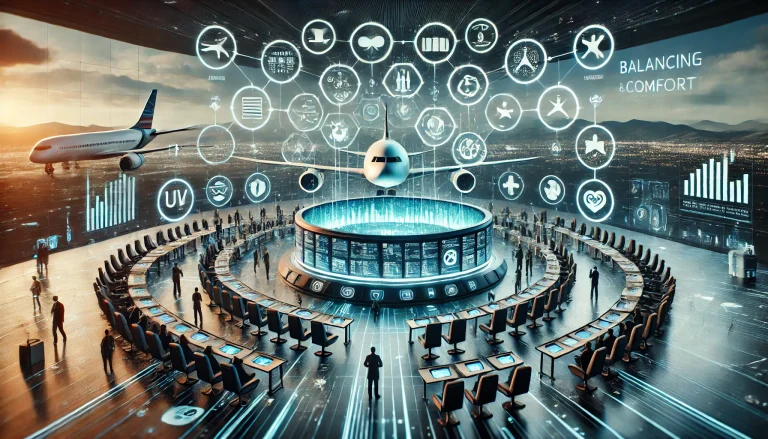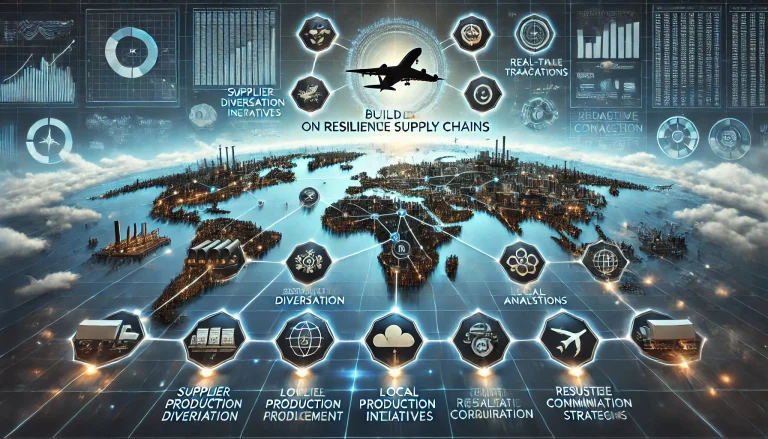Product Vision :
Our vision is to create a resilient platform that meets post-pandemic travelers’ evolving needs while ensuring sustainable growth for the airline industry. The product integrates advanced health and safety measures, flexible travel options, and innovative technology to enhance passenger experience, operational efficiency, and economic recovery. This includes robust sanitization protocols, touchless technology, and AI-driven health monitoring systems to ensure safety. We offer flexible booking and cancellation policies, seamless travel experiences with contactless check-ins, biometric boarding, and real-time updates to restore consumer confidence. Leveraging advanced analytics and AI, we manage demand fluctuations, optimize flight routes, and promote sustainability through the adoption of sustainable aviation fuels and electric aircraft. Our economic recovery initiatives support local businesses, ensure job security, and retrain staff for new technologies.
We invest in green technologies, collaborate to enhance supply chains, and promote eco-friendly travel options. The phased launch begins with hygiene measures and contactless technology in Q1 2025, with expected revenues totaling $5 million in Year 1, $10 million in Year 2, $20 million in Year 3, $35 million in Year 4, and $50 million in Year 5, sourced from subscriptions, licensing, and collaborative projects.
What are the biggest pain points they experience when trying to achieve their goals?
- Safety Concerns: Fear of contracting COVID-19 during travel, necessitating stringent hygiene measures.
- Travel Restrictions: Navigating changing travel bans and quarantine requirements.
- Booking Flexibility: Demand for flexible booking and cancellation policies due to uncertain travel plans.
- Reduced Demand: Decreased passenger numbers affecting airline revenues.
- Operational Costs: Increased costs for implementing health and safety measures.
- Staff Safety: Ensuring the health and safety of airline and airport staff.
- Customer Confidence: Restoring passenger confidence in the safety of air travel.
- Technological Integration: Adopting new technologies for contactless services and health monitoring.
- Sustainability Goals: Balancing immediate operational needs with long-term sustainability goals.
- Economic Recovery: Supporting local businesses and economies dependent on tourism.

Innovations that Helps to Solve this Problem:
- Green Travel: Adoption of SAFs and electric aircraft.
- Autonomous Flights: AI-driven autonomous aircraft for improved safety and efficiency.
- 3D Printing: Manufacturing aircraft components to reduce weight and improve fuel efficiency.
- Contactless Technology: Enhancing passenger experience through biometric and mobile solutions.
- Advanced Analytics and AI: Tools for demand prediction and route optimization.
- Sustainability Initiatives: Investment in SAFs and hybrid-electric aircraft.
- Digital-first Crew Experience: Holistic digital solutions for crew training and management.
- Emotional Loyalty Programs: Redesigning loyalty programs based on customer interests and values.
- Supply Chain Planning: Innovative solutions for SAF supply chain and carbon emissions tracking.
- Rerouting for Business Travel: Adapting to new patterns in business travel demand.
Top 10 Startups Who already Working for this Issue :
- ZeroAvia: Developing hydrogen-electric powertrains for zero-emission aircraft.
- Aviation H2: Specializing in hydrogen planes and retrofitting existing aircraft for carbon-free travel.
- FLYORO TECHNOLOGIES: Offering solutions for sustainable aviation fuel blending and distribution.
- AHYRES: Providing autonomous UAS inspection solutions for infrastructure.
- Pentaxi: Manufacturing autonomous eVTOL aircraft for passenger and cargo transport.
- Apex Aeroprecision: Specializing in 3D-printed aircraft interiors for efficiency and customization.
- Jet Engines Australia: Creating turbojet propulsion engines using metal additive manufacturing.
- SkyNRG: A pioneer in the sustainable aviation fuel market.
- Volocopter: Developing urban air mobility solutions with electric air taxis.
- Wright Electric: Focused on creating electric commercial aircraft.
Conclusion :
The airline industry’s impact on local communities encompasses economic, environmental, and social dimensions. Economically, it creates jobs and boosts tourism but can increase living costs and dependency on tourism. Environmentally, it contributes to noise and air pollution, affecting residents’ health and quality of life. Socially, it enhances connectivity and cultural exchange but can cause displacement and community disruption. Key pain points include noise and air pollution, economic displacement, traffic congestion, environmental degradation, health risks, cultural displacement, over-reliance on tourism, security concerns, and job insecurity. Competitors like Delta, United, American, Southwest, and Lufthansa are adopting enhanced hygiene measures, flexible booking options, contactless technology, SAFs, and AI to address these challenges.
Startups such as ZeroAvia, Aviation H2, FLYORO TECHNOLOGIES, AHYRES, Pentaxi, Apex Aeroprecision, Jet Engines Australia, SkyNRG, and Volocopter are also innovating in areas like zero-emission aircraft and sustainable aviation fuels. Despite advancements, gaps remain in addressing scalability of sustainable solutions and comprehensive economic impacts on local communities.



